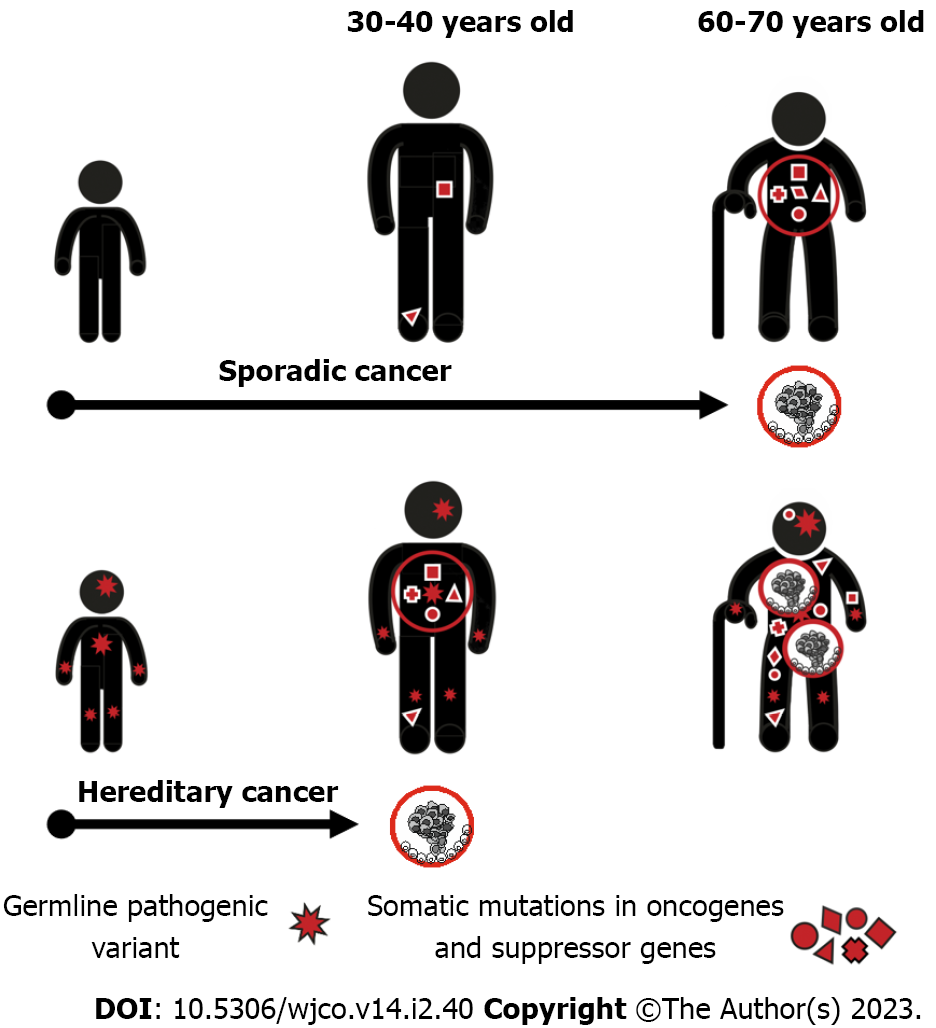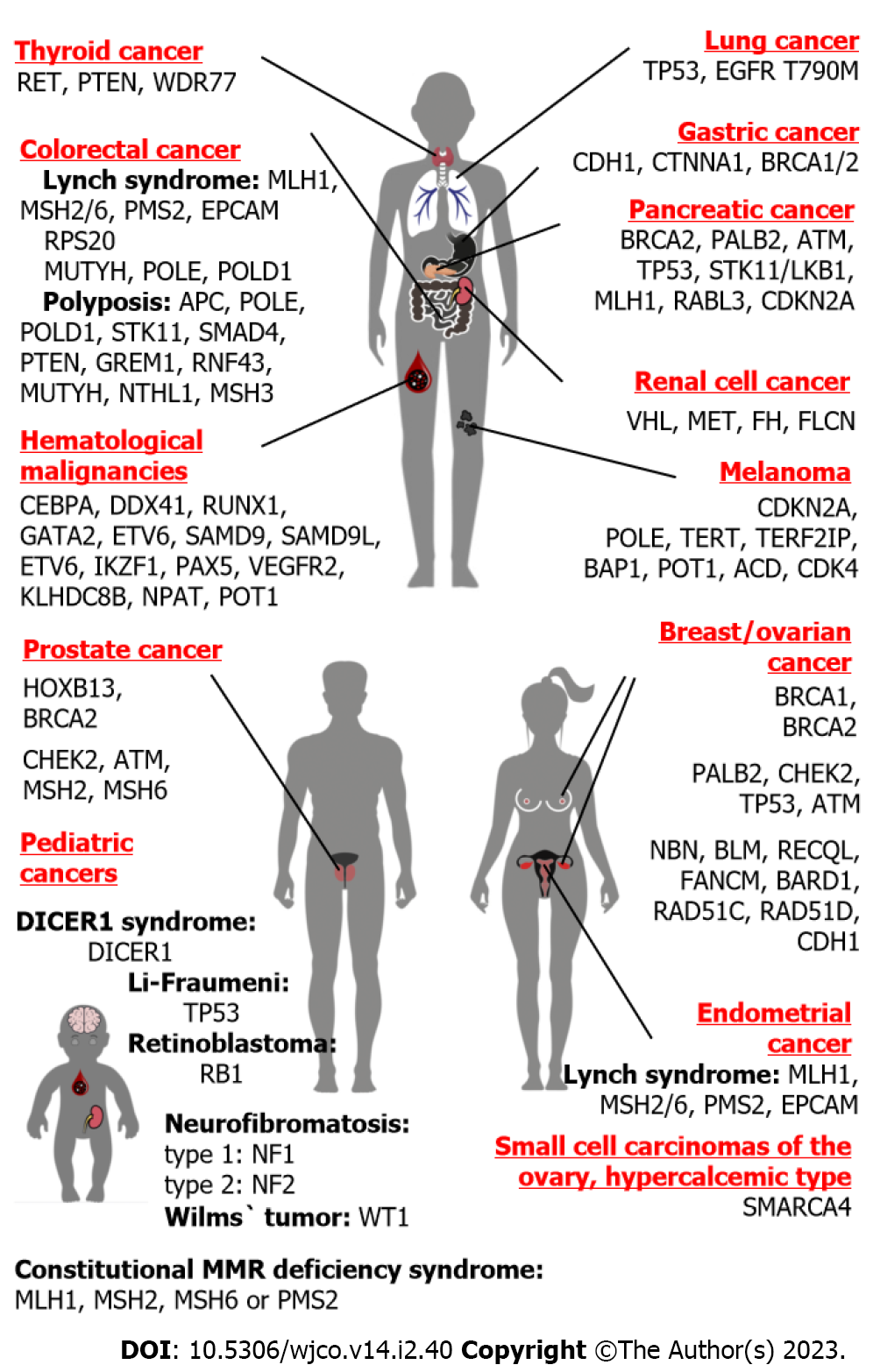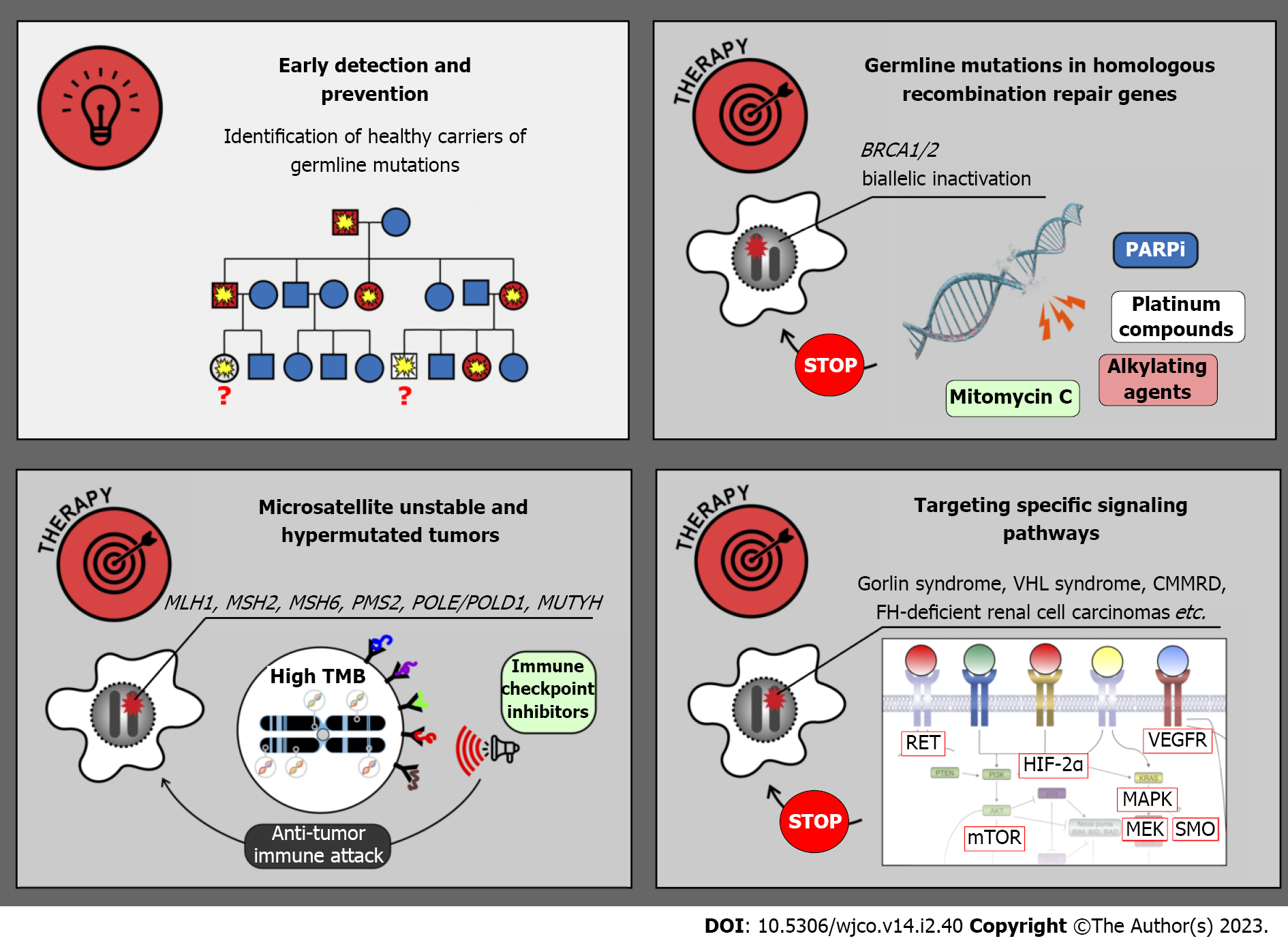Copyright
©The Author(s) 2023.
World J Clin Oncol. Feb 24, 2023; 14(2): 40-68
Published online Feb 24, 2023. doi: 10.5306/wjco.v14.i2.40
Published online Feb 24, 2023. doi: 10.5306/wjco.v14.i2.40
Figure 1 Mechanisms of hereditary cancer predisposition.
Single cancer-driving mutation is usually fully compensated, therefore carriers of germline pathogenic variants may remain healthy during a prolonged period of time. However, since every cell in the target organ already contains one alteration in cancer gene, the probability of accumulation of a critical mass of additional oncogenic mutations in any given cell clone is high, and cancer manifestation often occurs at a relatively young age.
Figure 2 Main hereditary cancer genes and organs at risk.
This figure illustrates major hereditary cancer types observed in females, males, adults of both genders, and children.
Figure 3 Management of hereditary cancer syndromes.
PARPi: Poly (ADP-ribose) polymerase inhibitors; TMB: Tumor mutation burden; HIF-2α: Hypoxia inducible factor-2α; VHL: von Hippel-Lindau; mTOR: Mechanistic target of rapamycin; MAPK: Mitogen-activated protein kinase signaling pathway; MEK: Mitogen-activated protein kinase; VEGFR: Vascular endothelial growth factor receptor; SMO: Smoothened; CMMRD: Constitutional mismatch repair deficiency syndrome.
- Citation: Imyanitov EN, Kuligina ES, Sokolenko AP, Suspitsin EN, Yanus GA, Iyevleva AG, Ivantsov AO, Aleksakhina SN. Hereditary cancer syndromes. World J Clin Oncol 2023; 14(2): 40-68
- URL: https://www.wjgnet.com/2218-4333/full/v14/i2/40.htm
- DOI: https://dx.doi.org/10.5306/wjco.v14.i2.40











